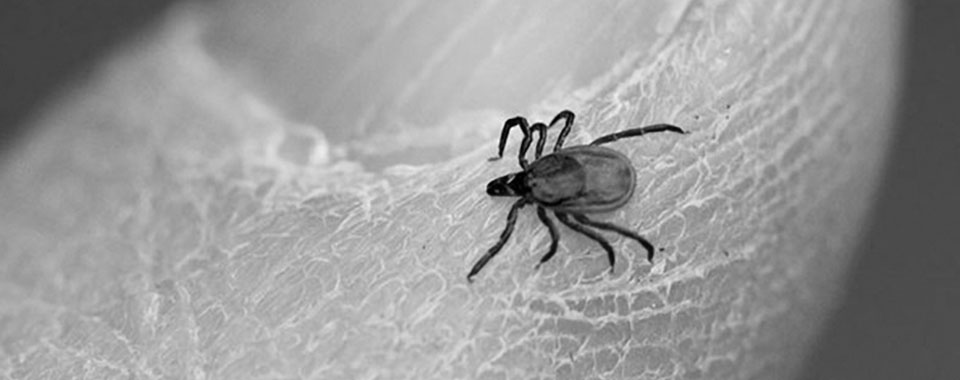Lyme Disease

Trail workers should take precautions against Lyme disease, a debilitating tick-borne illness that can cause cardiac and neurological problems as well as arthritis.
Lyme disease is spread by black-legged ticks (deer ticks) and is found along most of the Trail, but is particularly prevalent in southern New England and the mid-Atlantic states.
Lifecycle
Ticks go through a three-stage life cycle over two years that requires a blood meal at each stage. Typically, larval ticks become infected with the bacteria that cause Lyme disease by feeding on infected animals (white-footed mice are the most common source). Those larvae then molt into infected nymphs. After feeding, the larva molt into adults, which seek a final blood meal before mating and laying eggs.
Nymphal ticks are most active from late spring through mid-summer, but ticks can be active any time the temperature is above 45 degrees, sheltering in leaf litter and becoming dormant in colder weather.
Recognition
The ticks are tiny and hard to spot. An adult female is about 1⁄10 of an inch long. A male is even smaller, and a nymph may be less than half that size. Bites are generally painless. People can become infected without being aware of having been bitten.
However, there is some good news: Ticks generally crawl on a potential host for some time before beginning to feed and can be removed before becoming attached; they must feed for 36 hours or longer to transmit the Lyme disease bacteria; and, the disease can be prevented or treated.
Recommendations for Trail Workers
- Treat clothing with the insecticide Permethrin, which lasts through several washings (launder separately from untreated clothing).
- Apply insect repellent containing DEET to the skin and clothing. (Be sure to follow all directions for using products containing Permethrin or DEET.)
- Wear light-colored clothes that a dark, moving speck will be visible against. Long pants tucked into socks and long sleeved shirts tucked into pants provide the best protection.
- Inspect your body daily for several days after a field trip (look for “moving freckles”) and feel your scalp.
- If you find an attached tick, grasp it as close to the skin as possible with tweezers and remove with a steady pull. Treat the area with antiseptic.
Symptoms
The likelihood of an infected tick transmitting Lyme disease depends on how long it has been feeding. If the body of an embedded tick is still flat, it has not been attached long enough to cause infection. If symptoms develop, however, seek treatment—they could be caused by an undetected bite.
A red rash centering around the bite is characteristic, often appearing as a ring that is clear in the center. It may become larger and spread to other locations. If you develop such a rash, seek medical treatment. Treatment also should be sought if flu-like symptoms of fever, headache, and muscle aches develop within 30 days of a known tick bite or possible exposure. If untreated, painful or swollen joints may develop.
More on Lyme Disease
Last year, the Infectious Diseases Society of America published clinical guidelines for the prevention, diagnosis and treatment of Lyme disease, and other diseases that can be carried by the blacklegged tick.
Treatment of a known bite is based on the prevalence of Lyme disease in the area, identification of an attached tick, how long it is estimated to have been attached (based on the degree of engorgement), and whether treatment can be started within 72 hours of it being removed. Information on diagnosis and treatment when symptoms occur without a known bite also are provided.
The guidelines were published in Clinical Infectious Diseases, Vol. 43, No. 9 (scroll to “The Clinical Assessment, Treatment, and Prevention of Lyme Disease, Human Granulocytic Anaplasmosis, and Babesiosis: Clinical Practice Guidelines by the Infectious Diseases Society of America.”)
Reproduced from The Register (Spring 2007), a publication of the Appalachian Trail Conservancy
 South Shenandoah
South Shenandoah